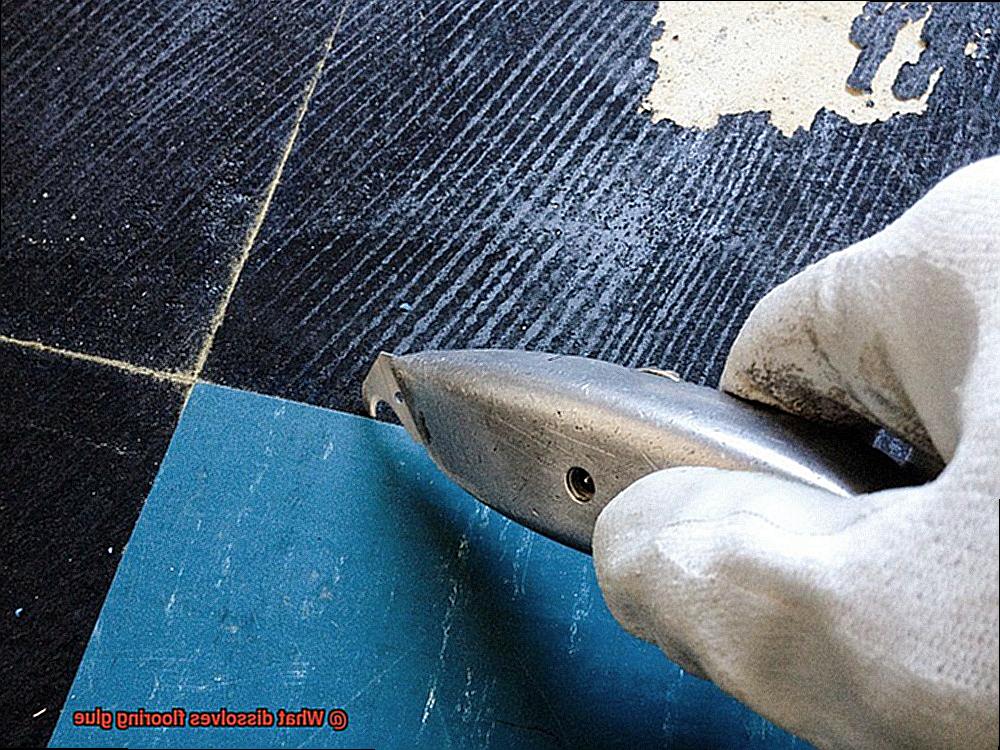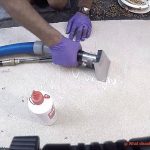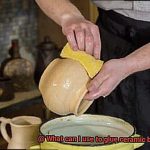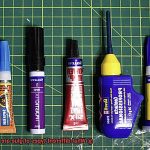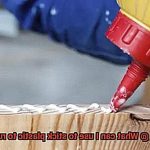Renovating or remodeling our homes is an exciting endeavor, but it often comes with unexpected challenges. And one of the sneakiest culprits hiding beneath our feet is flooring glue. This stubborn adhesive can leave behind a sticky mess long after we’ve removed the flooring.
But fret not, my friends. We’ve ventured into the world of chemistry to uncover the secrets of dissolving this pesky glue once and for all. From tried-and-true solutions to fascinating alternatives, get ready to bid farewell to those stubborn remnants and reclaim your floors.
So, let’s dive right in and explore the magical powers of solvents, natural remedies, and innovative techniques that break the bond between your floors and their adhesive captor. It’s time to liberate your floors like never before.
Join us on this captivating journey as we unveil hidden formulas that strip away flooring glue effortlessly. We’ll also share some tips on choosing the best method for your specific type of flooring. Together, we’ll immerse ourselves in the realm of chemistry and transform your space into a fresh and inviting sanctuary.
Whether you’re a DIY enthusiast or simply seeking invaluable knowledge, our mission to dissolve flooring glue is sure to ignite your curiosity. So grab a cup of coffee, sit back, and let us unravel the secrets behind this sticky enigma. Your floors are about to shine brighter than ever before.
What is Flooring Glue?
Contents
Flooring glue is the unsung hero of a successful flooring installation. It’s the invisible force that holds everything together, ensuring durability and stability for various types of flooring materials. In this comprehensive guide, we’ll delve into the depths of flooring glue, exploring its purpose, the different types available, and important considerations for selecting the perfect adhesive for your project.
Unleashing the Purpose of Flooring Glue:
- Flooring glue is the ultimate bond between the flooring material and the subfloor, creating a strong and unyielding connection.
- It acts as a guardian against shifting or lifting of the flooring, providing unwavering stability and a long-lasting foundation.
- Some adhesives go above and beyond, offering additional benefits like moisture resistance or cushioning effects to minimize noise transmission.
Types of Flooring Glue:
- Each type of flooring demands its own specialized adhesive tailored to its unique material properties.
- Wood flooring necessitates an adhesive designed specifically for bonding wood to diverse subfloor materials.
- Vinyl or linoleum flooring requires a distinct adhesive compatible with these particular surfaces.
- The right adhesive selection ensures optimal adhesion and exceptional performance.
Unlocking Additional Considerations:
- Areas prone to high humidity or moisture demand moisture-resistant glues to combat potential damage.
- Adhesive removers containing solvents like acetone or mineral spirits can dissolve flooring glue during removal, simplifying the process.
- Applying heat using a heat gun or hairdryer can soften the adhesive, making it easier to scrape away.
- Natural alternatives like vinegar or rubbing alcohol can also dissolve certain types of glue, offering an eco-friendly option.
Commercial Adhesive Removers
Commercial adhesive removers are powerful products specifically designed to dissolve and remove adhesive residues from various surfaces, including floors. These products come in different formulations, such as solvent-based and citrus-based options, to cater to different needs and preferences.
Solvent-based adhesive removers contain strong chemicals like acetone or MEK, which have the ability to break down adhesives effectively. They work by softening the glue, making it easier to scrape or wipe away. On the other hand, citrus-based removers are made from natural citrus extracts, providing a milder and more environmentally friendly option. These removers are still effective in dissolving glue but are generally safer to use and have a pleasant scent.
When using commercial adhesive removers, it is important to choose the right type of remover for your specific flooring glue. Different glues may require different solvents for effective removal. It is recommended to read the instructions on both the flooring adhesive and the adhesive remover to ensure compatibility and effectiveness.
To use commercial adhesive removers safely and effectively, it is crucial to follow the manufacturer’s instructions. This includes wearing protective gloves to protect your hands from the powerful chemicals and ensuring proper ventilation in the area where you are working to minimize exposure to fumes.
Before applying the adhesive remover to the entire surface, it is always a good idea to test it on a small, inconspicuous area of your floor first. This will help you determine how your flooring reacts to the product and prevent any potential damage or discoloration.
Once you have chosen the right type of adhesive remover and taken necessary safety precautions, apply the remover according to the instructions provided. Allow it some time to penetrate and soften the glue before gently removing the residue with a scraper or cloth.
It is important to note that removing adhesive residues may require multiple applications and some elbow grease. Patience is key in achieving a completely glue-free floor that looks as good as new.
Heat Application
Heat application is a powerful technique for dissolving flooring glue, making the removal process much easier. There are several methods to apply heat, depending on the type of flooring and the amount of glue that needs to be dissolved.
One popular method is using a heat gun or a hairdryer set on high. By directing the hot air onto the glue, it gradually softens and becomes more pliable. This allows for effortless removal with a scraper or putty knife. Remember to keep the heat source moving continuously to prevent any damage or discoloration to your floor.
Another effective heat application technique is using a steam cleaner. The high temperature steam works its magic by loosening and dissolving the adhesive. This method is especially useful for larger areas or stubborn glue residues. However, make sure to follow the manufacturer’s instructions and take necessary precautions to protect yourself and your flooring surface.
In some cases, a heat gun or steam cleaner may not be suitable for certain types of flooring like vinyl or laminate. In such situations, a hot water soak can be an excellent alternative. Simply pour boiling water over the affected areas and let it sit for a few minutes. The heat from the water will soften the glue, making it easier to scrape away.
Before applying heat to a larger portion of your floor, always test a small, inconspicuous area first to ensure compatibility. Additionally, ensure proper ventilation to avoid inhaling any fumes that may be produced during the process.
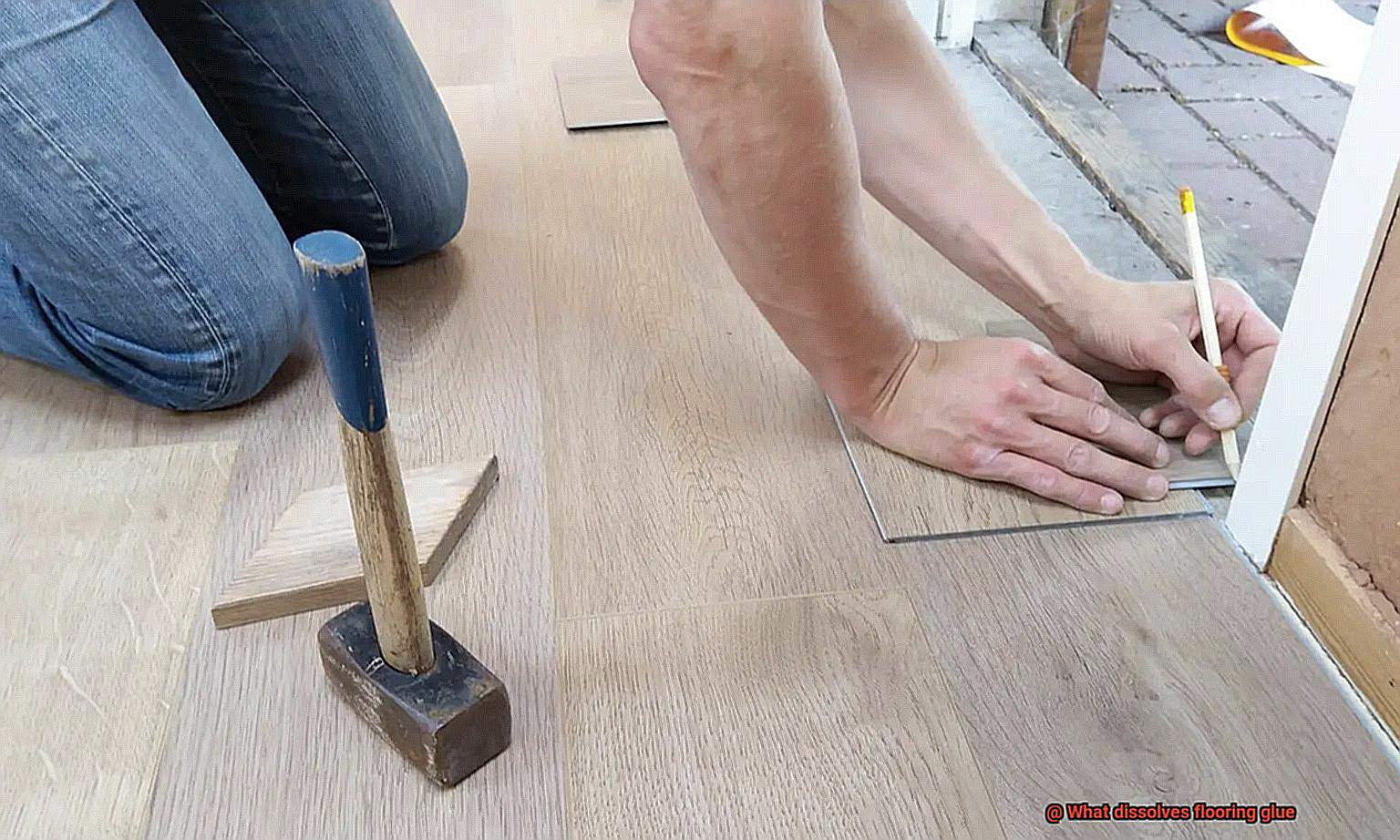
In conclusion, heat application is a superhero in the battle against flooring glue. Whether you choose a heat gun, steam cleaner, or hot water soak, applying heat can soften that stubborn adhesive and make your removal job much easier. Just keep in mind the type of flooring you have and take precautions to ensure a successful and safe process.
Vinegar
Look no further than your pantry for a remarkable solution: vinegar. This natural and eco-friendly ingredient is not only highly effective but also easy on the wallet. In this blog post, we will delve into the properties and uses of vinegar, focusing on its ability to dissolve flooring glue. So grab your spray bottle and get ready to bid adieu to sticky situations.

The Power of Vinegar:
Vinegar, a mild acid, possesses the remarkable ability to break down the adhesive properties of glue. While white vinegar is the most commonly employed type for this purpose, apple cider vinegar can also do the trick. Its safe and eco-friendly nature makes it an appealing alternative to harsh chemicals.
Removing Flooring Glue with Vinegar:
To remove flooring glue using vinegar, follow these simple steps:
- Create a solution by mixing equal parts of vinegar and warm water in a spray bottle.
- Spray the solution onto the glue, allowing it to sit for a few minutes to penetrate the adhesive.
- Gently scrape away the softened glue using a scraper or putty knife.
For more stubborn glue, repeat the process or consider using a scrub brush to aid in loosening it.
Tips for Success:
- Keep in mind that vinegar may not be effective on all types of flooring glue, particularly those resistant to solvents.
- Ensure proper ventilation as vinegar may have a lingering strong smell after cleaning.
- For particularly challenging cases, you can apply heat using a heat gun or steam cleaner in conjunction with vinegar to further soften the glue.
Rubbing Alcohol
Rubbing alcohol, also known as isopropyl alcohol, is a versatile liquid that has numerous uses in cleaning, disinfecting, and even medical applications. In this article, we will explore the different types of rubbing alcohol available and their specific uses. We will also delve into the chemical composition of rubbing alcohol and discuss any potential health hazards associated with its use. Finally, we will provide an overview of how to safely use rubbing alcohol in everyday life.
Types of Rubbing Alcohol and Their Uses:
- Isopropyl Alcohol (IPA): This is the most common type of rubbing alcohol and is readily available in pharmacies and supermarkets. It is used for cleaning wounds, disinfecting surfaces, and removing sticky residue from various materials.
- Ethanol: Also known as ethyl alcohol or grain alcohol, ethanol is commonly used as a disinfectant in healthcare settings. It is effective against a wide range of bacteria and viruses.
- Denatured Alcohol: This type of rubbing alcohol contains additives to make it unsuitable for human consumption. It is often used as a solvent in paints, lacquers, and shellacs.
Chemical Composition and Properties:
Rubbing alcohol typically contains 70% to 99% isopropyl alcohol or ethanol, with the remaining percentage being water. The high alcohol content gives it its disinfecting properties by denaturing proteins in microorganisms, killing bacteria and viruses on contact. Rubbing alcohol also evaporates quickly, leaving little to no residue behind.
Potential Health Hazards:
While rubbing alcohol has many uses, it is important to use it safely and be aware of potential health hazards. Some important considerations include:
- Flammability: Rubbing alcohol is highly flammable and should be kept away from open flames or heat sources.
- Inhalation: Inhalation of high concentrations of rubbing alcohol can cause dizziness, headaches, and nausea. Ensure proper ventilation when using rubbing alcohol in large quantities.
- Skin Irritation: Prolonged or repeated contact with rubbing alcohol can cause dryness, redness, and irritation of the skin. It is recommended to use gloves or wash hands thoroughly after use.
Safe Usage Tips:
To safely use rubbing alcohol in everyday life, consider the following tips:
- Read and follow the instructions on the packaging carefully.
- Store rubbing alcohol in a cool, dry place away from heat sources.
- Keep rubbing alcohol out of reach of children and pets.
- Use rubbing alcohol in a well-ventilated area to minimize inhalation risks.
- Avoid using rubbing alcohol on open wounds or broken skin, as it can delay healing.
Considerations and Variables
Removing flooring glue can be an arduous and frustrating task, but armed with the right knowledge and approach, it doesn’t have to be an insurmountable challenge. In this comprehensive guide, we will delve into the various considerations and variables that can significantly impact the effectiveness of different solvents when dissolving flooring glue. From the type of flooring material to the condition of the glue itself, understanding these factors will empower you to make informed choices and select the best solvent for your specific situation.
Consideration 1: Type of Flooring Material
Different types of flooring materials possess unique characteristics that necessitate tailored approaches for removing adhesive. Vinyl, hardwood, carpet, and tile all require specific considerations when it comes to dissolving glue. For instance, warm water and dish soap are often effective in dissolving vinyl flooring glue, while hardwood floors may demand the use of denatured alcohol.
Consideration 2: Adhesive Used
The type of adhesive employed is a crucial variable that must be carefully evaluated. Water-based adhesives are commonly used for vinyl and carpet installations and can usually be dissolved with water or mild solvents. Conversely, solvent-based adhesives found in hardwood flooring installations may necessitate stronger solvents such as acetone or mineral spirits.
Consideration 3: Condition of the Glue
The condition of the glue plays a significant role in determining the most suitable solvent and removal method. Fresh and wet glue is relatively easier to remove with water or mild solvents. However, if the glue has dried and hardened over time, stronger solvents or mechanical methods like scraping or sanding might be necessary to achieve successful removal.
Variables to Keep in Mind:
- Harmful Effects: It is imperative to remember that some solvents can cause damage or discoloration to certain types of flooring or surfaces. Always conduct a small inconspicuous area test before applying any solvent more widely.
- Safety Precautions: Certain solvents like acetone are highly flammable and can irritate the skin. To ensure personal safety, protective gloves should always be worn, and work should be conducted in a well-ventilated area when using such solvents.
- Manufacturer Recommendations: It is highly advisable to consult the flooring manufacturer’s guidelines and recommendations for removing adhesive. They may provide specific instructions and product recommendations that can guide you in your removal process.
Safety Precautions
Working with adhesive removers, such as those used to dissolve flooring glue, requires careful consideration of safety precautions. By following these guidelines, you can ensure a safe and successful removal process.
- Protective Gear: Before starting, make sure to equip yourself with the necessary protective gear. Wear gloves, goggles, and a respirator to shield your skin, eyes, and lungs from potential irritation and harmful fumes.
- Ventilation: Work in a well-ventilated area to minimize exposure to vapors. Open windows and use fans to promote good air circulation, preventing any buildup of toxic gases.
- Workspace Preparation: Remove any flammable materials from the work area and keep a fire extinguisher nearby as a precautionary measure. Safety should always be the top priority.
- Read Instructions: Carefully read and follow the instructions provided on the adhesive remover product. Different products may have specific safety guidelines and application methods that should be adhered to.
- Test Compatibility: Before applying the adhesive remover to the entire surface, test it on a small, inconspicuous area of the flooring. This allows you to ensure compatibility and avoid any unexpected damage.
- Gentle Removal: Use gentle pressure and non-abrasive tools when removing the glue. Avoid excessive force or aggressive scraping tools to prevent damage to the floor or subfloor.
- Solvent-Based Removers: If using a solvent-based adhesive remover, exercise extra caution. Avoid prolonged skin contact, and if accidental contact occurs, wash the affected area thoroughly with soap and water.
- Proper Disposal: Dispose of adhesive remover containers, rags, and other waste products according to local regulations. Ensure proper disposal to minimize environmental impact.
- Keep Children and Pets Away: During the removal process, keep children and pets away from the work area to prevent accidental exposure or ingestion of potentially harmful substances.
- Seek Medical Attention: If you experience any adverse reactions or health concerns during or after using adhesive removers, seek medical attention immediately.
5QhQ_CA8diU” >
Also Read: How To Remove Glue From Laminate Flooring?
Conclusion
In conclusion, the task of removing flooring glue may seem daunting, but fear not. With the right knowledge and approach, you can conquer this stubborn adhesive and reclaim your floors. There are a plethora of methods available to dissolve different types of flooring glue, ranging from commercial adhesive removers to heat application, vinegar, and rubbing alcohol.
Commercial adhesive removers are your secret weapon in this battle. These powerful products are specifically designed to dissolve and remove adhesive residues from various surfaces. Whether you opt for a solvent-based or citrus-based formulation, there’s a remover out there to cater to your needs. Just make sure to select the appropriate type for your specific flooring glue and follow the manufacturer’s instructions for safe and effective use.
Heat application is another ace up your sleeve when it comes to dissolving flooring glue. Whether you prefer the sizzling power of a heat gun, the steamy effectiveness of a steam cleaner, or even just a good old-fashioned hot water soak, applying heat softens the adhesive and makes it easier to scrape away.
If you’re looking for a natural and eco-friendly solution, look no further than vinegar. This magical elixir can break down the adhesive properties of glue with ease. Simply create a solution using equal parts vinegar and warm water, spray it onto the offending glue, let it sit for a few minutes, then gently scrape away the softened residue. Voila. The glue is gone.
For those seeking versatility in their quest for clean floors, rubbing alcohol is here to save the day. Also known as isopropyl alcohol, this liquid powerhouse has multiple cleaning uses – including dissolving certain types of flooring glue. Just be sure to follow instructions on the packaging and take necessary precautions when using rubbing alcohol.
Remember that removing flooring glue requires careful consideration of factors such as the type of flooring material used, the type of adhesive employed, and the condition of the glue itself. And let’s not forget about safety – always take precautions when working with adhesive removers or any other solvents.
By understanding these considerations and variables, and by implementing proper safety measures throughout the removal process, you can successfully dissolve flooring glue and unveil clean and beautiful floors once again.

